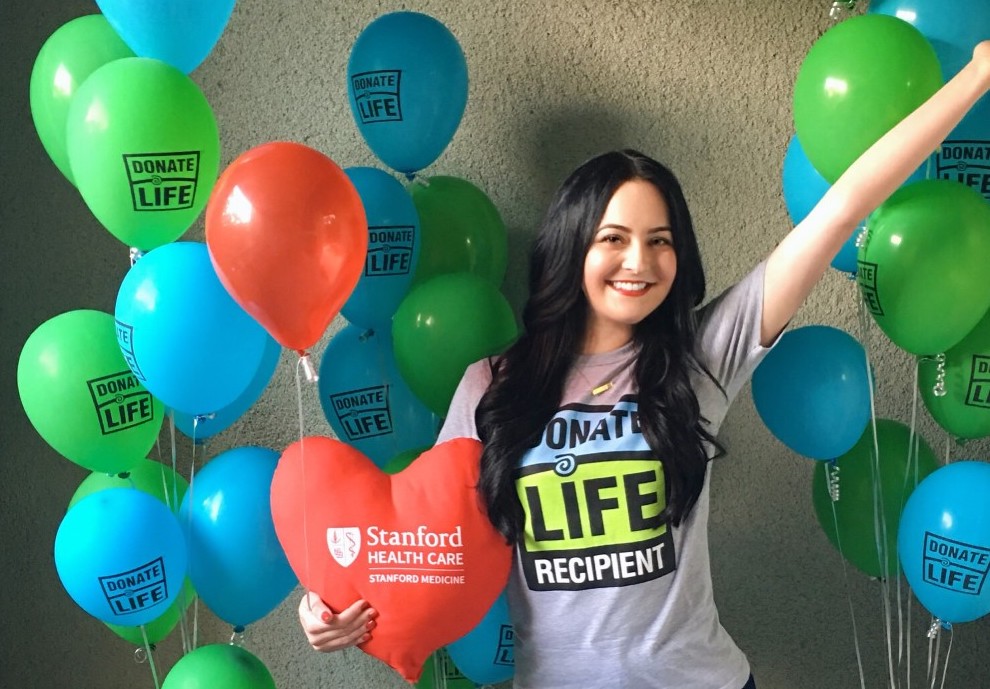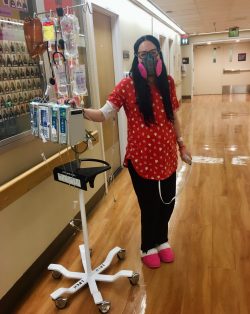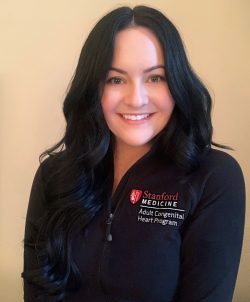
Alice’s Transplant Story: A New, Better Normal
Growing up, Alice Georgitso was no stranger to the healthcare system. At only one month old, she was diagnosed with congenital heart disease. Her first closed-heart surgery was performed at four weeks, and her first open-heart surgery was at nine months. By the time she was 20 years old, she had experienced a heart attack and an ischemic stroke; and had required an Implantable Cardioverter Defibrillator (ICD) and cardiac ablation to protect her from life-threatening arrhythmias (irregular heartbeats); one closed-heart surgery and three open-heart surgeries; not to mention multiple blood transfusions.
Life Before Transplant
As scary as all these incidents and procedures were, though, Alice had never known anything different. As she puts it, “Being sick was my normal.” Despite never going more than three months without seeing a cardiologist, she made accommodations to live a fulfilling life. Alice went away to college, completed graduate school, and moved from her small town outside of Buffalo, New York to the Bay Area at age 23.
After one year of living and working in the Bay Area, Alice began experiencing signs of heart failure and uncontrolled arrhythmias. Though she had always experienced fluctuations in her heart rate, her symptoms were getting worse. After a second cardiac ablation was performed to treat her life-threatening arrhythmias, Alice was referred to Stanford Health Care’s Heart Transplant/Heart Failure Program to begin her journey to heart transplantation at age 24.
Alice would spend three years waiting for her donor heart. During the grueling waiting period, she continued to experience arrhythmias and had to undergo a procedure to repair her ICD, a device that would attempt to “shock” her heart to normal rhythm if her heart rate became dangerously fast. During this time, Alice also received infusion treatments known as IVIG to help reduce her high levels of antibodies that made finding a matching donor heart even more challenging than normal. Her antibody levels were abnormally high because of the multiple blood transfusions she received in previous surgeries — blood transfusions that saved her life at that time.
In addition to the extensive medical care Alice was receiving, her heart condition now impacted her everyday routine. The heart failure and arrhythmias caused Alice to be out of breath and experience racing heart rate as her heart struggled to oxygenate her body during tasks as simple as making the bed or brushing her teeth. She worried about whether every place she went had an elevator, since stairs posed a particular risk for shortness of breath and arrhythmias, and avoided travel for fear of not being able to get to an emergency room or adequate care when she might need it. Even with all the precautions she took, she ended up needing to call 9-1-1 about once per month. It wasn’t until she got her heart transplant that she realized just how different life could and should feel.
Transplant and Recovery

Alice walking 17 days post-transplant.
Finally, in 2017, she was delivered the life-changing news: She got a heart! Her heart transplant was performed on September 25, 2017, and, coming out of surgery, she knew immediately that things were very different, in the best way possible. “Right after I woke up from surgery, I had so much color in my face. I had never had the proper circulation before, and it was shocking to realize that, with a functioning heart, my cheeks were rosy, and I looked so alive!” she said.
Ten days after her transplant, she was able to take her first post-surgery shower. Though it may not seem like a major milestone, for Alice, it was the first time she’d showered without her heart racing. “At just 10 days after my transplant, I felt healthier than I had my entire life,” she said.
Since that time, Alice has taken advantage of her new, healthy life at every opportunity. “When I got my transplant, I told them I’d use my heart wisely,” she said. And so, she has.
Living Life and Giving Back
The same year that she received her transplant, she participated in her first 5K to support Donor Network West, which was a big deal considering she had previously never been allowed to run. She has also taken the opportunity to travel and has been to more than five countries in the past few years.
What takes up most of her time, though — the largest part of her “new normal” — is helping other transplant patients. Her own experiences with healthcare led her to earn a Master of Public Health degree and spend time working in community health prior to needing to put her career on hold while awaiting heart transplantation. Once she was recovered and ready to return to full-time work, she began working at the very place she received her transplant!

Alice in her Stanford Medicine employee shirt.
Currently, Alice is a Donor Search Coordinator with the Blood and Marrow Transplant Program at Stanford Health Care. In her role, she collaborates with the National Marrow Donor Program and Be The Match registry to coordinate allogeneic hematopoietic stem cell transplants for patients with complex disease who need a matching donor. Alice’s own story with transplantation allows her to fully understand the impact transplantation can have on patients.
In addition to her full-time position, Alice has taken on numerous volunteer opportunities, including serving as Chairperson of the Adult Congenital Heart Disease (ACHD) Patient & Family Advisory Council at Stanford Health Care. She assisted in developing the Stanford Adult Congenital Heart Program’s Peer-to-Peer Program and serves as a Mentor to ACHD patients pre- and post-organ transplantation to provide patients the opportunity to speak with someone who has been in their shoes. Most recently, Alice joined the Stanford Medicine Center for Improvement Advisory Committee because she is dedicated to delivering excellent patient and family care.
Through both her professional and personal life, Alice continues to advocate for transplant patients by encouraging others to register as an organ, eye and tissue donor, consider joining the Be The Match registry to potentially be a future stem cell donor for someone in need, and donate blood at a local blood center. “I’ve benefitted many times personally from the generosity of anonymous donors, and I’ve seen it so often at work, too. Whether it’s a simple blood donation to allow someone to have a surgery, stem cell donation or organ donation, it really does save lives,” she said.
How to Help
There are three main steps you can take to support those in need of a transplant.
- Sign up to be an organ, eye, and tissue donor if you haven’t already. You can join the registry through the DMV as part of the license renewal process or online at donatelife.net. Be sure to also let your immediate family know your decision. This tells them that, at the time of your passing, you would like them to say yes to organ donation. As a deceased donor, the hospital can arrange for your organs, eyes and tissue to help someone on the transplant waiting list.
- Join the blood and marrow registry. When you join the registry, you receive a kit to swab your cheek to get your HLA typing, the sequencing used to match donors with patients. Your information will be stored in the registry and you could be contacted to make a blood or marrow stem cell donation if you are identified as a match for someone who needs a stem cell transplant to survive. Learn more at bethematch.org
- Donate blood! Transplant patients rely on a healthy supply of blood products to enable them to receive transplant surgeries. Plus, some patients waiting for transplants — bone marrow recipients especially — rely on transfusions to keep them healthy until a match is found. Make your next appointment.
